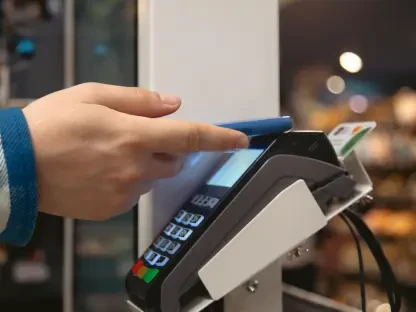Today, we’re thrilled to sit down with Zainab Hussain, a seasoned e-commerce strategist with deep expertise in customer engagement and operations management. With years of experience helping retailers navigate the complexities of modern commerce, Zainab offers a unique perspective on how integration platforms are transforming the industry. In this conversation, we’ll explore the latest developments in retail technology, the importance of seamless system integration, strategies for market expansion, and the role of innovative features like AI in shaping the future of retail. Let’s dive into how these advancements are empowering retailers to adapt, grow, and thrive in a competitive landscape.
Can you walk us through the significance of a recent $7 million funding round for a leading retail integration platform and what it signals for the industry?
Absolutely. This $7 million funding round is a game-changer for the platform and a strong indicator of the growing demand for integration solutions in retail. It reflects investor confidence in the need for flexible, scalable infrastructure that helps retailers stay competitive. The funding, led by experienced venture firms, shows that the market sees integration as a critical piece of future-proofing retail operations, especially as consumer behaviors and technology continue to evolve rapidly.
How do you see this kind of financial backing shaping the growth trajectory for companies in the retail tech space?
Financial backing like this acts as a catalyst for growth. It allows companies to ramp up sales and marketing efforts to reach more enterprise retailers and brands. More importantly, it fuels expansion into new markets, like North America, where there’s huge potential for growth. It also means more resources for product innovation, ensuring that the platform stays ahead of the curve with cutting-edge features that address real retailer pain points.
What are some of the biggest challenges retailers face when their systems aren’t properly integrated, and why does this matter so much today?
Retailers with disconnected systems often deal with a cascade of problems. Stock overselling is a big one—imagine promising inventory you don’t have, which frustrates customers and damages trust. Then there are delayed or lost orders, chaotic fulfillment during peak seasons, and endless manual data entry between e-commerce, warehouses, and finance systems. These issues waste time, increase costs, and can even lead to catastrophic failures for some businesses. In today’s fast-paced market, where customers expect speed and accuracy, integration isn’t just nice to have—it’s essential.
How does an integration platform help retailers overcome these operational hurdles and improve customer experiences?
Integration platforms act as the glue that connects disparate systems—whether it’s e-commerce, ERP, point-of-sale, or fulfillment. By automating data flows, they prevent errors like overselling and ensure orders are processed smoothly. This means faster fulfillment, fewer frustrated customers, and staff who can focus on growth rather than firefighting. Ultimately, it creates a seamless experience for shoppers, which is critical for building loyalty in a competitive market.
Can you share your thoughts on how advancements like AI are being integrated into retail tech platforms and what benefits they bring to the table?
AI is revolutionizing retail tech by adding layers of automation and intelligence. For instance, new AI features in integration platforms can analyze data in real time, predict potential issues, and automate repetitive tasks. This saves retailers significant time on manual work, like data entry or troubleshooting. It also frees up teams to focus on strategic initiatives, like improving customer engagement or scaling operations. AI is essentially a force multiplier, making operations smarter and more efficient.
Why is expanding into markets like North America such a strategic priority for retail tech companies right now?
North America is a massive and dynamic market with a high concentration of enterprise retailers and brands looking to modernize their tech stacks. There’s also a growing adoption of composable commerce and flexible systems here, which creates a ripe opportunity for integration platforms. Expanding into this region allows companies to support global retailers operating across multiple areas, helping them scale consistently while keeping their technology adaptable to local needs.
Can you explain the value of a partner-first approach in driving growth for retail tech platforms and how it benefits all parties involved?
A partner-first approach, often called a “partner flywheel,” is about creating a mutually beneficial ecosystem. Tech and agency partners are incentivized to refer business and help deliver the platform at scale, which expands global reach. In return, partners gain access to cutting-edge tools and support that enhance their own offerings. For the platform, this model ensures it evolves based on real-time feedback from the retail tech market, staying relevant and responsive to current needs.
What kind of impact do quicker implementation times have on retailers looking to adapt to fast-changing consumer behaviors?
Speed is everything in retail today. Quicker implementation times mean retailers can connect their systems and respond to market shifts or consumer trends without long delays. For example, if there’s a sudden spike in demand for a product, an integrated platform with fast setup allows retailers to adjust inventory and fulfillment processes almost instantly. This agility translates to better customer experiences, higher sales, and the ability to stay ahead of competitors who are bogged down by slow, custom-built solutions.
What is your forecast for the future of integration platforms in retail over the next few years?
I believe integration platforms will become the backbone of retail operations in the coming years. As retailers move away from rigid, legacy systems toward flexible, composable architectures, the demand for seamless connectivity will only grow. We’ll likely see even more innovation, especially with AI and automation, making these platforms smarter and more predictive. Additionally, global expansion and partnerships will play a bigger role, enabling retailers to operate efficiently across borders. It’s an exciting time, and I think these platforms will be central to how retail evolves to meet future challenges.









